Turning the pages of women’s scrapbooks: the scrapbooks of Florence Horsbrugh, Adeline Hankey and Theodosia Cadogan
This display is drawn from a lecture by Cherish Watton, based on her MPhil research, looking at scrapbooks created by women on political and diplomatic activity. Made out of photographs, newspaper articles, and other ephemeral material, scrapbooks are a treasure trove of memories. Scrapbooks provide a tantalising window into what political and diplomatic activity looked like for men and women in the late-nineteenth and early-twentieth century.
The display explores the different items women pasted in their scrapbooks and what they can tell us about how they wanted their own and their family members’ lives remembered. In particular, it focuses on women whose scrapbooks are deposited in the Churchill Archives Centre. The first are those scrapbooks created by Florence Horsbrugh, one of the most notable female politicians of the twentieth-century. Her scrapbooks are some of the most personal documents that remain and tell us about how she wanted her political contributions to be remembered. This display also opens the scrapbooks created by Lady Adeline Hankey and Lady Theodosia Cadogan, who were married to diplomats Maurice Hankey and Alexander Cadogan respectively. Adeline and Theo poured a huge amount of time, energy, and love into these scrapbooks, taking seriously their role as memory keepers for their husbands.
Cherish Watton received a Distinction for her MPhil in Modern British History, which she studied for at Churchill College. While at Churchill, Cherish received the inaugural Royal Historical Society Undergraduate Public History Prize for her website on the work of the Women’s Land Army.
Florence Horsbrugh
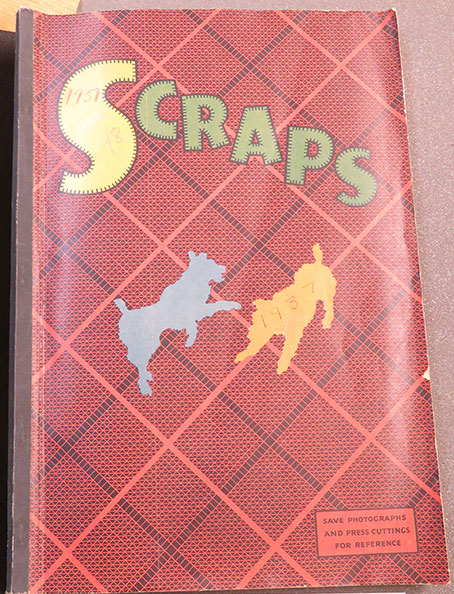
Florence Horsbrugh selected The Whopper Scrapbook to document her political career in six volumes. The covers of this softback book suggest the scrapbooks were marketed at women and children. Her choice of scrapbook is jarring against the serious legacy which Horsbrugh sought to convey through her rigorous pasting of newspaper articles and photographs.
The Papers of Florence Horsbrugh, HSBR 2/8, 1937
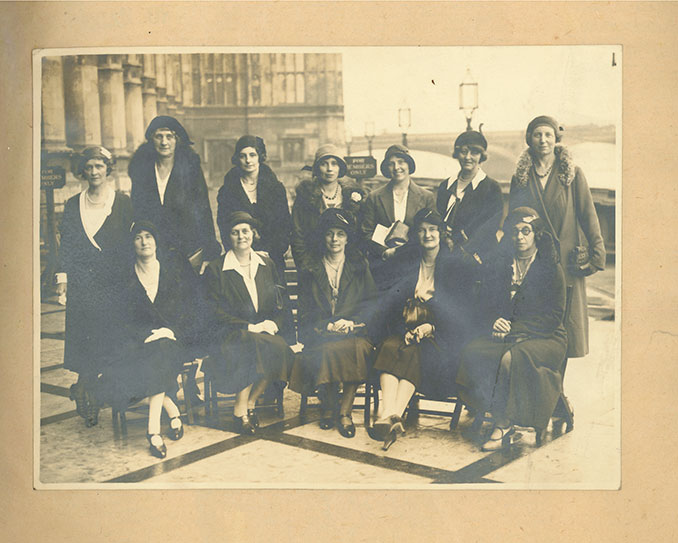
The opening page of Horsbrugh’s first scrapbook on her political activity, framing her electoral success against that of her peers. This photograph shows all but one of the newly-elected female Conservative politicians on the House of Commons Terrace in November 1931. Florence Horsbrugh is on the far right on the back-row.
The Papers of Florence Horsbrugh, HSBR, 2/3, 1931-1932

A typical page of Horsbrugh’s scrapbook, which show newspaper articles ordered chronologically. Horsbrugh included negative press coverage, such as when she aroused criticism for her comments on hunger being caused by an ‘ignorance of food values’. After including these criticisms, she pasted her response on the right-hand page.
The Papers of Florence Horsbrugh, HSBR, 2/7, July-August 1936
Adeline Hankey

Maurice Hankey, Secretary of the War Council, gave his wife Adeline this drawing of a ‘Jemima boot’ from the Allied Conference in November 1916 to include in the first scrapbook. According to Stephen Roskill, author of Maurice’s biography, the ‘Jemima boot’ was the colloquial name for the French military boot in British circles. The drawing of the boot symbolised the somewhat adversarial presence of George Clemenceau. These sketches offered a more personal and unique record of conference proceedings compared to the generic press photos.
The Papers of Adeline, Lady Hankey, AHKY 3/1/3 c. 1903–1920
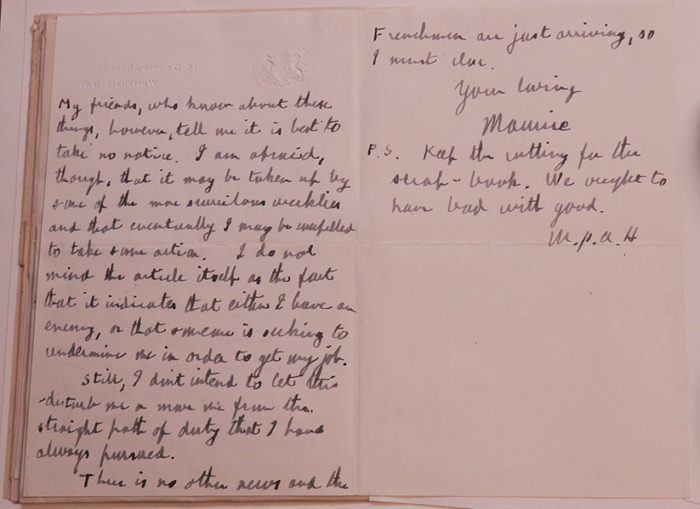
Letter sent from Maurice to Adeline Hankey on 13th March 1917. In the postscript, Maurice asks his wife to keep a newspaper cutting. The article criticised Maurice for his involvement on the War Council, while attending the Assembly of the Anglo-French Conference. Maurice asked Adeline to keep the cutting on the basis that ‘we ought to have bad with good’.
The Papers of Maurice Hankey, 1st Baron Hankey, HNKY 3/22 12 March 1917
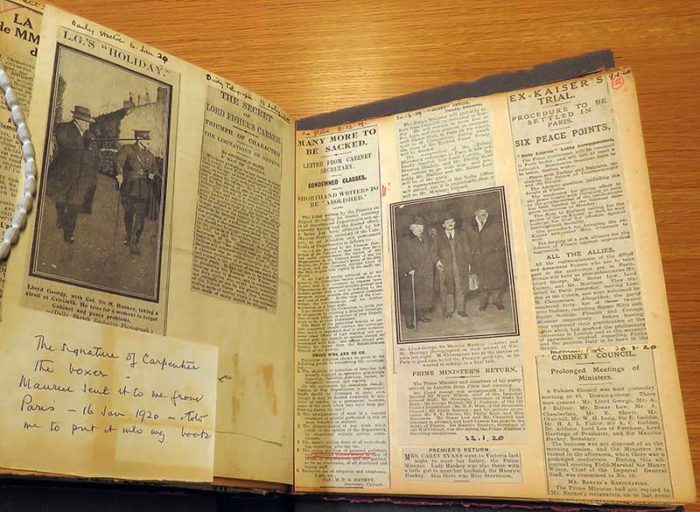
The signature of boxer George Carpentier, collected by Maurice in January 1920 and sent to Adeline to include in her second scrapbook. She included a note, pasted on the left-hand page of the scrapbook, showing their joint collecting efforts.
The Papers of Maurice Hankey, 1st Baron Hankey, HNKY 2/2 November 1917–July 1920

This page from Adeline’s third scrapbook shows a photograph of her and her children, Robin and Ursula, published in The Tatler in 1921. Though Maurice was not present for these press photographs, Adeline reunited the Hankey family in the pages of her scrapbook. Over the top, she pasted a postcard sent from Maurice to Ursula while on board a ship heading back home from Canada.
The Papers of Maurice Hankey, 1st Baron Hankey, HNKY 2/3 July 1920–March 1930
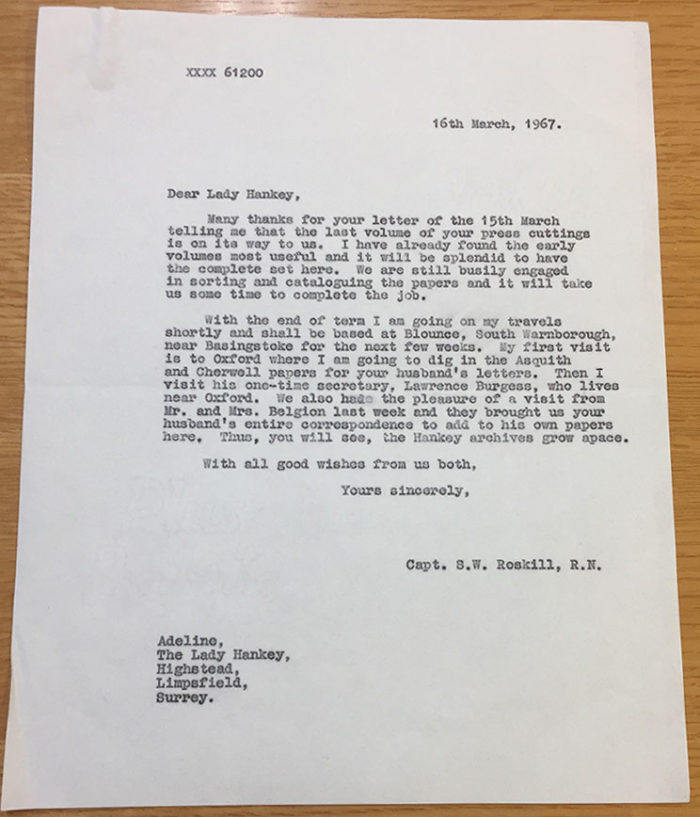
A letter sent from Stephen Roskill to Adeline on 16th March 1967. After Maurice’s death, Adeline took responsibility for the donation of his papers to the Churchill Archives Centre. This letter confirms the donation of Adeline’s final scrapbook. In this letter, Roskill notes how useful he found Adeline’s scrapbooks when writing Maurice’s biography.
The Papers of Stephen Roskill, ROSK 2/78, 16th March 1967

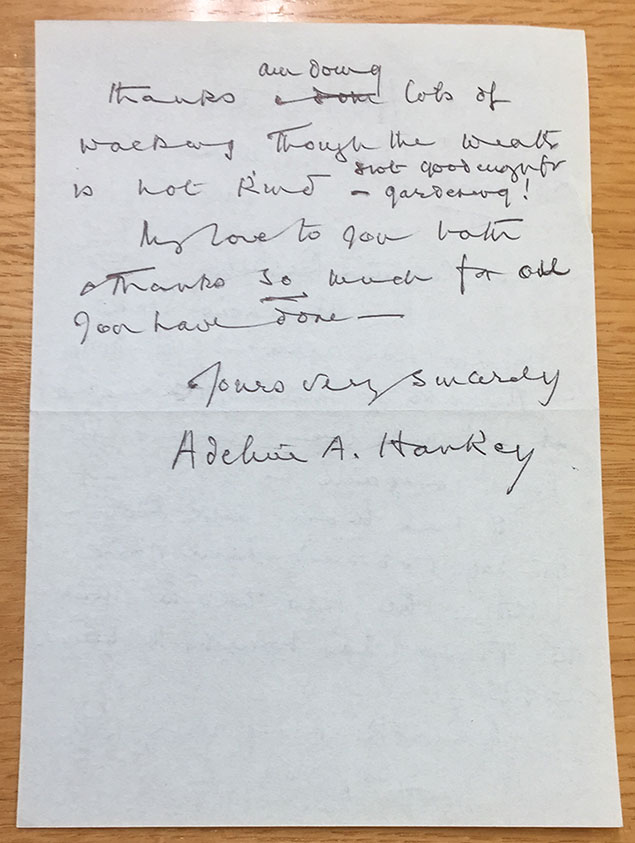
A letter sent from Adeline to Stephen Roskill in November 1969, thanking him for sending back her first scrapbook. In the letter, Adeline writes ‘my precious “scrap book” has arrived to-day – Thanks so much for sending it, I just love having it back again’. This final scrapbook (the first in the series, on display here as AHKY 3/1/3) returned to the Churchill Archives Centre in 2002, with the deposit of Adeline’s papers after her death.
The Papers of Stephen Roskill, ROSK 7/78 21 November 1969.
Theodosia Cadogan
Lady Theodosia (‘Theo’) Cadogan created eight scrapbooks on the diplomatic career of her husband Alexander (‘Alec’), covering the period from 1890 to 1941. On all but one of the scrapbooks, Alec’s name is embossed on the front. The scrapbooks in this series were the most expensive out of those presented here today. A hardback cover with reinforced corners and thicker pages shows the investment in documenting Cadogan’s legacy in a format that would last.
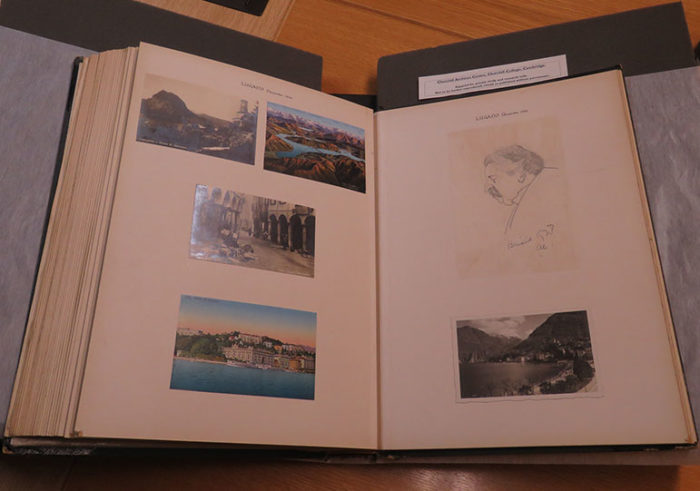
Several sketches appear in the Cadogans’ scrapbooks. On the right-hand page, Lady Theo included a sketch by Alexander of the French Foreign Minister Aristide Briand at a conference in Lugano in 1928. Sketching no doubt helped some delegates to pass the long meetings on the discussion of German reparations, by watching each other closely.
The Papers of Sir Alexander George Montagu Cadogan, ACAD 2/1, 1890-1928

Photographs of the Cadogan family in China taken by Lady Theo in the 1930s. Cadogan was appointed to the British legation in Peking (now Beijing), and was later promoted to Ambassador. Opposite photographs of Chiang Kai-shek, Lady Theo pasted a photograph marking the first flight taken by her daughter Cynthia. The juxtaposition of these photographs shows the blurring of professional and personal familial life within the scrapbooks.
The Papers of Sir Alexander Cadogan, ACAD 2/3 c. 1890-1928
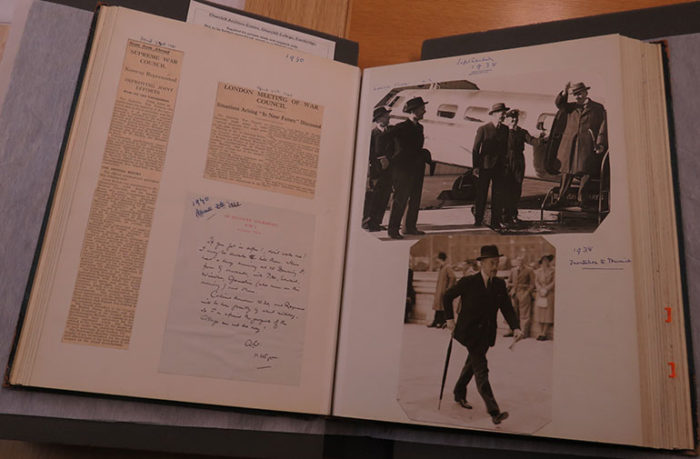
On the left-hand page of this scrapbook, Lady Theo pasted a note sent to her by her husband at 11:45pm in April 1940. Cadogan asks Lady Theo not to wake him if she came in after him. Alec had an early start the next day at the meeting of the War Council to discuss the accelerating international conflict. For the Cadogan family, this meant they would be unable to visit their cottage the next morning. Again, the scrapbook fuses the macro level of European affairs with the micro-familial ones.
The Papers of Sir Alexander Cadogan, ACAD 2/4 c. 1936–1941
